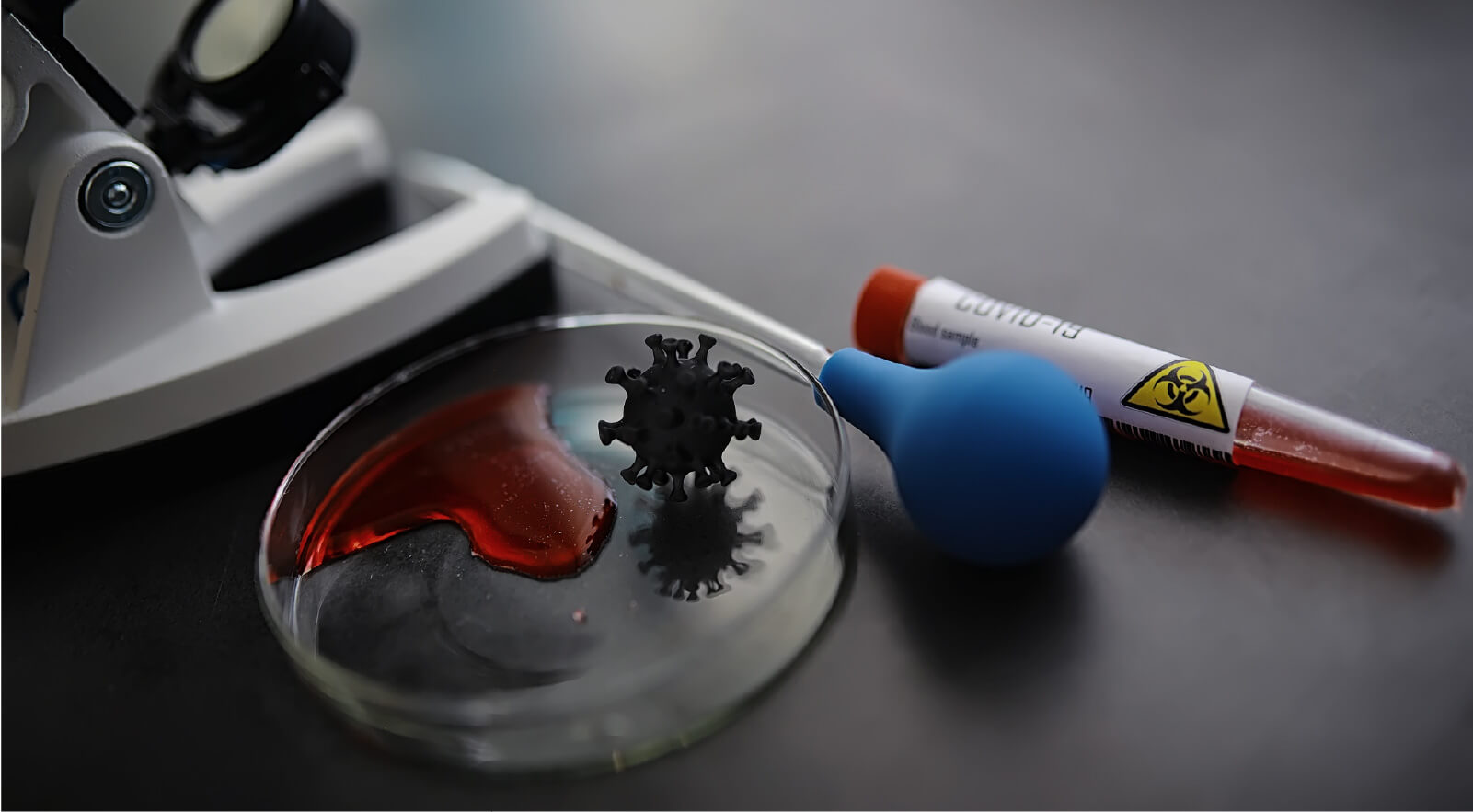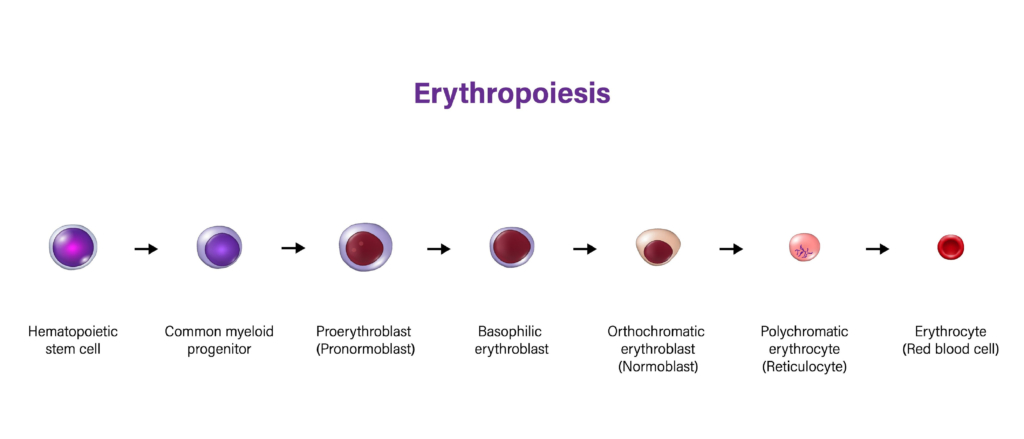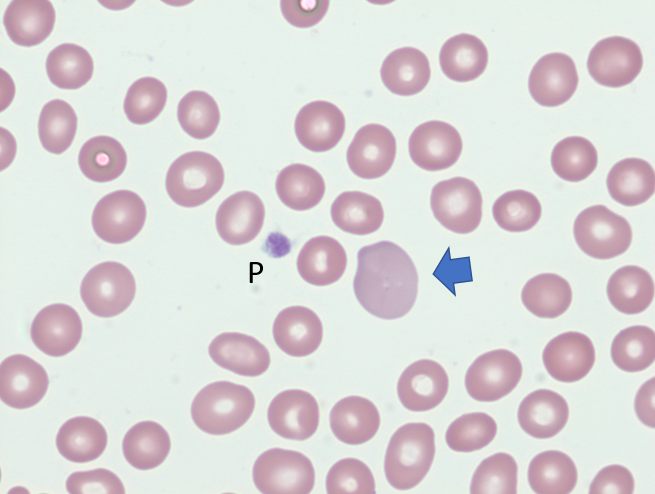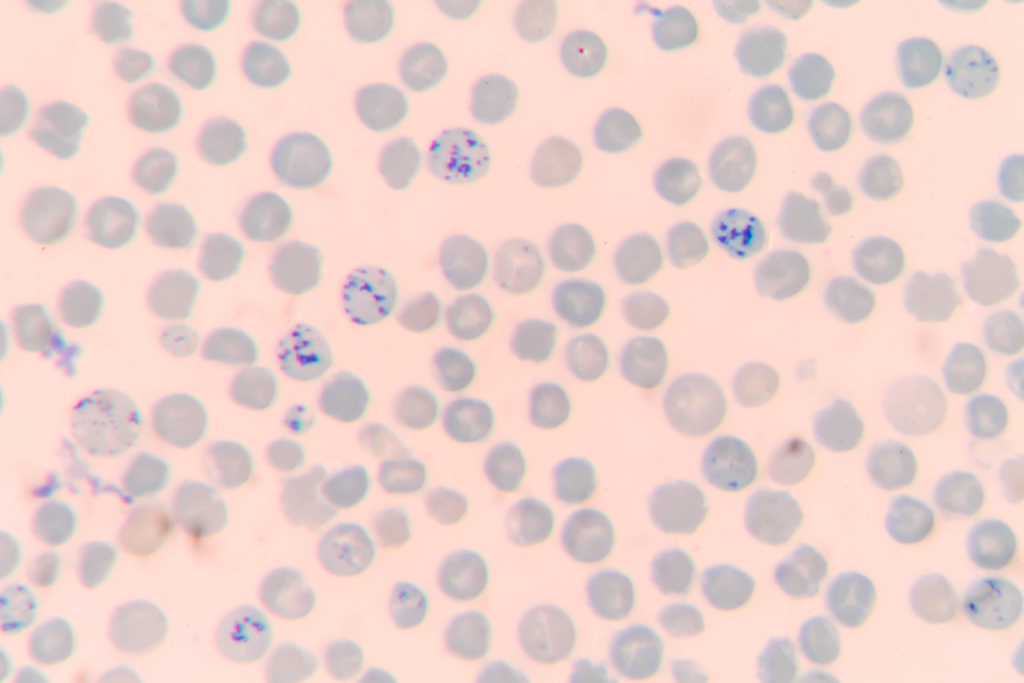
Reticulocytes
This patient’s MCV and his reticulocyte percentage are key in answering this question. This patient has a normocytic anemia (an MCV between 80 and 100).
How should we interpret his reticulocyte percentage? First, it is important to understand what a reticulocyte represents.
A reticulocyte is a red cell precursor in its final stage of maturation. As red cells mature in the bone marrow, their nuclei are removed (a process known as “enucleation”). After their nuclei are removed, they are no longer able to synthesize proteins or mRNA. However, some residual mRNA remains in the red cell shortly after enucleation. A red cell which lacks its nucleus but still has this residual mRNA is known as a “reticulocyte”. Once the mRNA has broken down, the reticulocyte becomes a fully-mature red cell.

There are three ways to estimate or measure the reticulocyte count:
1. Peripheral blood smear

2. Reticulocyte stain

3. RNA fluorochrome

Reticulocytes are easily recognized on a peripheral smear because their mRNA stains blue (in contrast to the surrounding mature red cells). An elevated reticulocyte percentage indicates the bone marrow is attempting to produce red cells quickly, generally in an attempt to compensate for anemia.
Our patient has an elevated reticulocyte percentage, indicating that this patient’s bone marrow is attempting to compensate. But is it enough?
A “reticulocyte index” (RI) is a means of determining whether the patient’s bone marrow is responding appropriately to the degree of anemia present. The RI works by adjusting the reticulocyte percentage for the degree of the patient’s anemia. The more anemic the patient, the faster their red cell production (if their bone marrow is functioning appropriately). In other words, this tells you whether the bone marrow is part of the problem.
The formula for the reticulocyte index is as follows:
| Hematocrit | Maturation factor |
|---|---|
| > 35% | 1.0 |
| 25-35% | 1.5 |
| 20-25% | 2.0 |
| <20% | 2.5 |
The “maturation factor” represents red cell maturation time at different degrees of anemia. The more anemic a patient is, the faster their red cells will mature to compensate , and the higher their maturation factor will be:
By entering this patient’s reticulocyte percentage and hematocrit into the calculator above, we obtain a RI of 3.3.
A RI of >2 indicates an appropriate response to anemia. We can conclude that his bone marrow is responding appropriately to his degree of his anemia; his bone marrow is not part of the problem.
You do not need to recall maturation factors! To avoid performing this calculation each time you evaluate anemia, see MDCalc’s Reticulocyte Index calculator.



